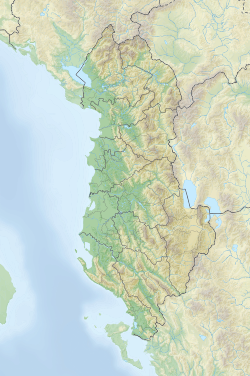| King Mosque | |
|---|---|
Xhamia e Mbretit | |
 King Mosque, Berat in 2024 | |
| Religion | |
| Affiliation | Islam |
| Ecclesiastical or organisational status | Mosque |
| Status | Active |
| Location | |
| Location | Berat, Berat County |
| Country | Albania |
Location of the mosque in Albania | |
 Interactive map of King Mosque | |
| Coordinates | 40°42′20″N19°57′08″E / 40.7056°N 19.9521°E |
| Architecture | |
| Type | Islamic architecture |
| Style | Ottoman |
| Founder | Bayezid II |
| Completed | 1492 CE |
| Official name | King Mosque, Berat |
| Designated | 1948 |
| Reference no. | BR462 |
The King Mosque (Albanian : Xhamia e Mbretit or Xhamia e Hynqarit), also known as the Sultan's Mosque (Xhamia e Sulltanit) or Sultan Bayezid Mosque, is a mosque located in Berat City, Berat County, Albania. Completed in 1492 CE, the mosque was designated as a Cultural Monument of Albania in 1948. [1]


